Giuseppe Ricci
Adaptive Radar Detection in joint Range and Azimuth based on the Hierarchical Latent Variable Model
Apr 01, 2025Abstract:This paper focuses on the design of a robust decision scheme capable of operating in target-rich scenarios with unknown signal signatures (including their range positions, angles of arrival, and number) in a background of Gaussian disturbance. To solve the problem at hand, a novel estimation procedure is conceived resorting to the expectation-maximization algorithm in conjunction with the hierarchical latent variable model that are exploited to come up with a maximum \textit{a posteriori} rule for reliable signal classification and angle of arrival estimation. The estimates returned by the procedure are then used to build up an adaptive detection architecture in range and azimuth based on the likelihood ratio test with enhanced detection performance. Remarkably, it is shown that the new decision scheme can maintain constant the false alarm rate when the interference parameters vary in the considered range of values. The performance assessment, conducted by means of Monte Carlo simulation, highlights that the proposed detector exhibits superior detection performance in comparison with the existing GLRT-based competitors.
Multiple Sub-Pixel Target Detection for Hyperspectral Imaging Systems
Jan 16, 2023



Abstract:Hyperspectral target detection is a task of primary importance in remote sensing since it allows identification, location, and discrimination of target features. To this end, the reflectance maps, which contain the spectral signatures and related abundances of the materials in the observed scene, are often used. However, due to the low spatial resolution of most hyperspectral sensors, targets occupy a fraction of the pixel and, hence, the spectra of different sub-pixel targets (including the background spectrum) are mixed together within the same pixel. To solve this issue, in this paper, we adopt a generalized replacement model accounting for multiple sub-pixel target spectra and formulate the detection problem at hand as a binary hypothesis test where under the alternative hypothesis the target is modeled in terms of a linear combination of endmembers whose coefficients also account for the presence of the background. Then, we devise detection architectures based upon the generalized likelihood ratio test where the unknown parameters are suitably estimated through procedures inspired by the maximum likelihood approach. The performances of the proposed decision schemes are evaluated by means of both synthetic as well as real data and compared with an analogous counterpart by showing the effectiveness of the proposed procedure.
Innovative Cognitive Approaches for Joint Radar Clutter Classification and Multiple Target Detection in Heterogeneous Environments
Jul 08, 2022
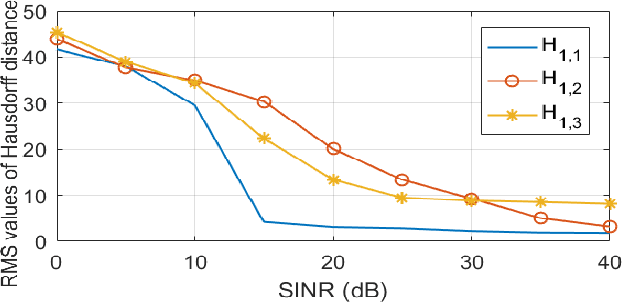
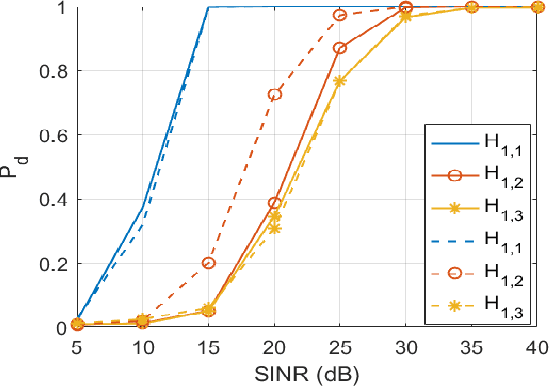
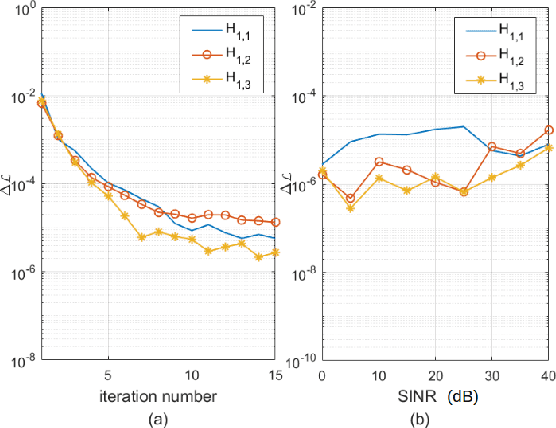
Abstract:The joint adaptive detection of multiple point-like targets in scenarios characterized by different clutter types is still an open problem in the radar community. In this paper, we provide a solution to this problem by devising detection architectures capable of classifying the range bins according to their clutter properties and detecting possible multiple targets whose positions and number are unknown. Remarkably, the information provided by the proposed architectures makes the system aware of the surrounding environment and can be exploited to enhance the entire detection and estimation performance of the system. At the design stage, we assume three different signal models and apply the latent variable model in conjunction with estimation procedures based upon the expectation-maximization algorithm. In addition, for some models, the maximization step cannot be computed in closed-form (at least to the best of authors' knowledge) and, hence, suitable approximations are pursued, whereas, in other cases, the maximization is exact. The performance of the proposed architectures is assessed over synthetic data and shows that they can be effective in heterogeneous scenarios providing an initial snapshot of the radar operating scenario.
A Unified Theory of Adaptive Subspace Detection. Part II: Numerical Examples
May 11, 2022



Abstract:This paper is devoted to the performance analysis of the detectors proposed in the companion paper where a comprehensive design framework is presented for the adaptive detection of subspace signals. The framework addresses four variations on subspace detection: the subspace may be known or known only by its dimension; consecutive visits to the subspace may be unconstrained or they may be constrained by a prior probability distribution. In this paper, Monte Carlo simulations are used to compare the generalized likelihood ratio (GLR) detectors derived in [1] with estimate-and-plug (EP) approximations of the GLR detectors. Remarkably, the EP approximations appear here for the first time (at least to the best of the authors' knowledge). The numerical examples indicate that GLR detectors are effective for the detection of partially-known signals affected by inherent uncertainties due to the system or the operating environment. In particular, if the signal subspace is known, GLR detectors tend to outperform EP detectors. If, instead, the signal subspace is known only by its dimension, the performance of GLR and EP detectors is very similar.
Design of Customized Adaptive Radar Detectors in the CFAR Feature Plane
Mar 23, 2022
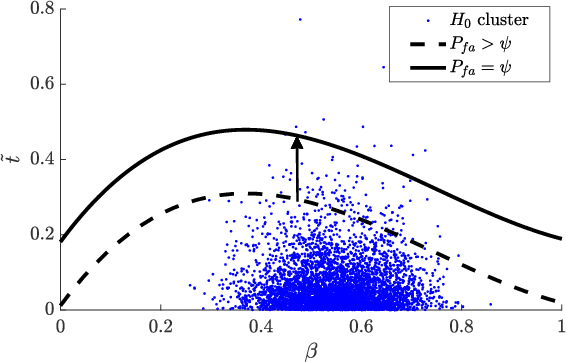


Abstract:The paper addresses the design of adaptive radar detectors having desired behavior, in Gaussian disturbance with unknown statistics. Specifically, given detection probability specifications for chosen signal-to-noise ratios and steering vector mismatch levels, a methodology for the optimal design of customized CFAR detectors is devised in a suitable feature plane based on maximal invariant statistics. To overcome the analytical and numerical intractability of the resulting optimization problem, a novel general reduced-complexity algorithm is developed, which is shown to be effective in providing a close approximation of the desired detector. The proposed approach solves the open problem of ensuring a prefixed false alarm probability while controlling the behavior under both matched and mismatched conditions, so enabling the design of fully customized adaptive CFAR detectors.
Adaptive Radar Detection in Heterogeneous Clutter-dominated Environments
Aug 18, 2021



Abstract:In this paper, we propose a new solution for the detection problem of a coherent target in heterogeneous environments. Specifically, we first assume that clutter returns from different range bins share the same covariance structure but different power levels. This model meets the experimental evidence related to non-Gaussian and non-homogeneous scenarios. Then, unlike existing solutions that are based upon estimate and plug methods, we propose an approximation of the generalized likelihood ratio test where the maximizers of the likelihoods are obtained through an alternating estimation procedure. Remarkably, we also prove that such estimation procedure leads to an architecture possessing the constant false alarm rate (CFAR) when a specific initialization is used. The performance analysis, carried out on simulated as well as measured data and in comparison with suitable well-known competitors, highlights that the proposed architecture can overcome the CFAR competitors and exhibits a limited loss with respect to the other non-CFAR detectors.
A Unified Theory of Adaptive Subspace Detection. Part I: Detector Designs
Jul 05, 2021Abstract:This paper addresses the problem of detecting multidimensional subspace signals, which model range-spread targets, in noise of unknown covariance. It is assumed that a primary channel of measurements, possibly consisting of signal plus noise, is augmented with a secondary channel of measurements containing only noise. The noises in these two channels share a common covariance matrix, up to a scale, which may be known or unknown. The signal model is a subspace model with variations: the subspace may be known or known only by its dimension; consecutive visits to the subspace may be unconstrained or they may be constrained by a prior distribution. As a consequence, there are four general classes of detectors and, within each class, there is a detector for the case where the scale between the primary and secondary channels is known, and for the case where this scale is unknown. The generalized likelihood ratio (GLR) based detectors derived in this paper, when organized with previously published GLR detectors, comprise a unified theory of adaptive subspace detection from primary and secondary channels of measurements.
EM-based Solutions for Covariance Structure Detection and Classification in Polarimetric SAR Images
Jun 21, 2021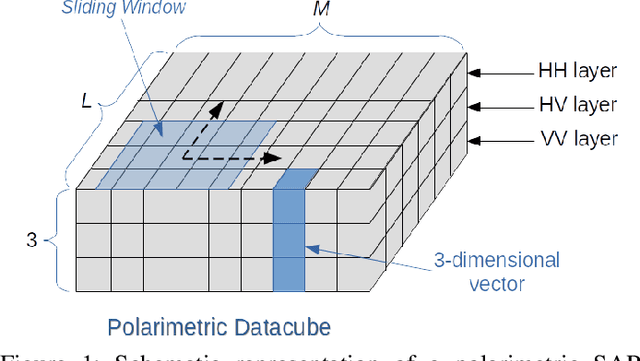

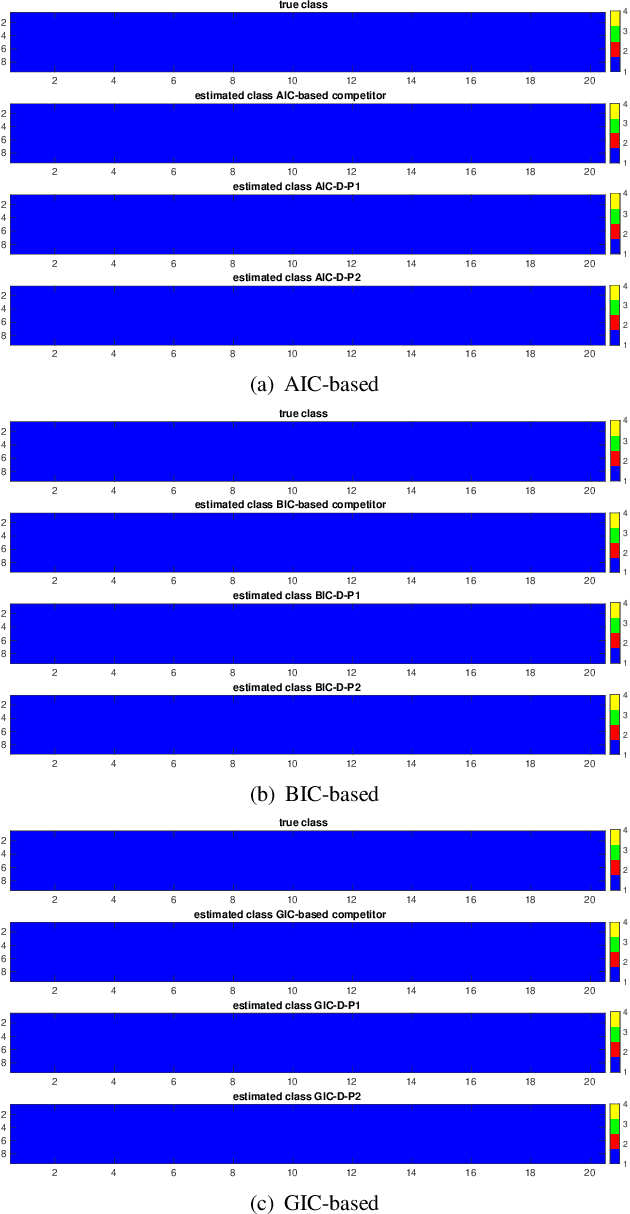
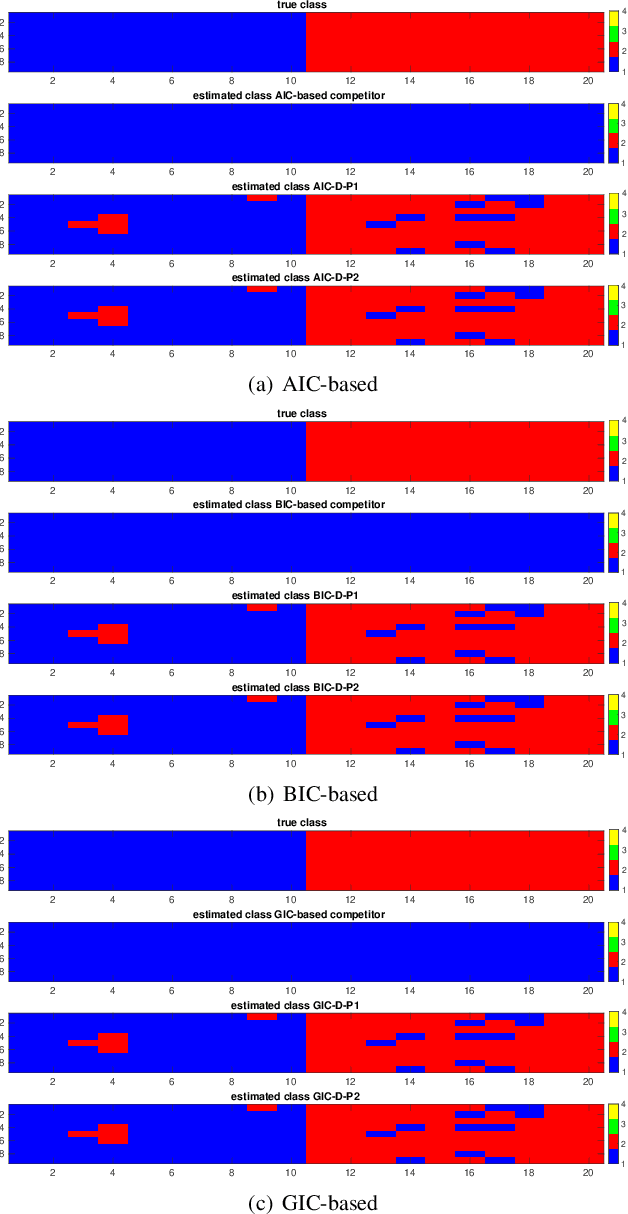
Abstract:This paper addresses the challenge of classifying polarimetric SAR images by leveraging the peculiar characteristics of the polarimetric covariance matrix (PCM). To this end, a general framework to solve a multiple hypothesis test is introduced with the aim to detect and classify contextual spatial variations in polarimetric SAR images. Specifically, under the null hypothesis, only an unknown structure is assumed for data belonging to a 2-dimensional spatial sliding window, whereas under each alternative hypothesis, data are partitioned into subsets sharing different structures. The problem of partition estimation is solved by resorting to hidden random variables representative of covariance structure classes and the expectation-maximization algorithm. The effectiveness of the proposed detection strategies is demonstrated on both simulated and real polarimetric SAR data also in comparison with existing classification algorithms.
 Add to Chrome
Add to Chrome Add to Firefox
Add to Firefox Add to Edge
Add to Edge